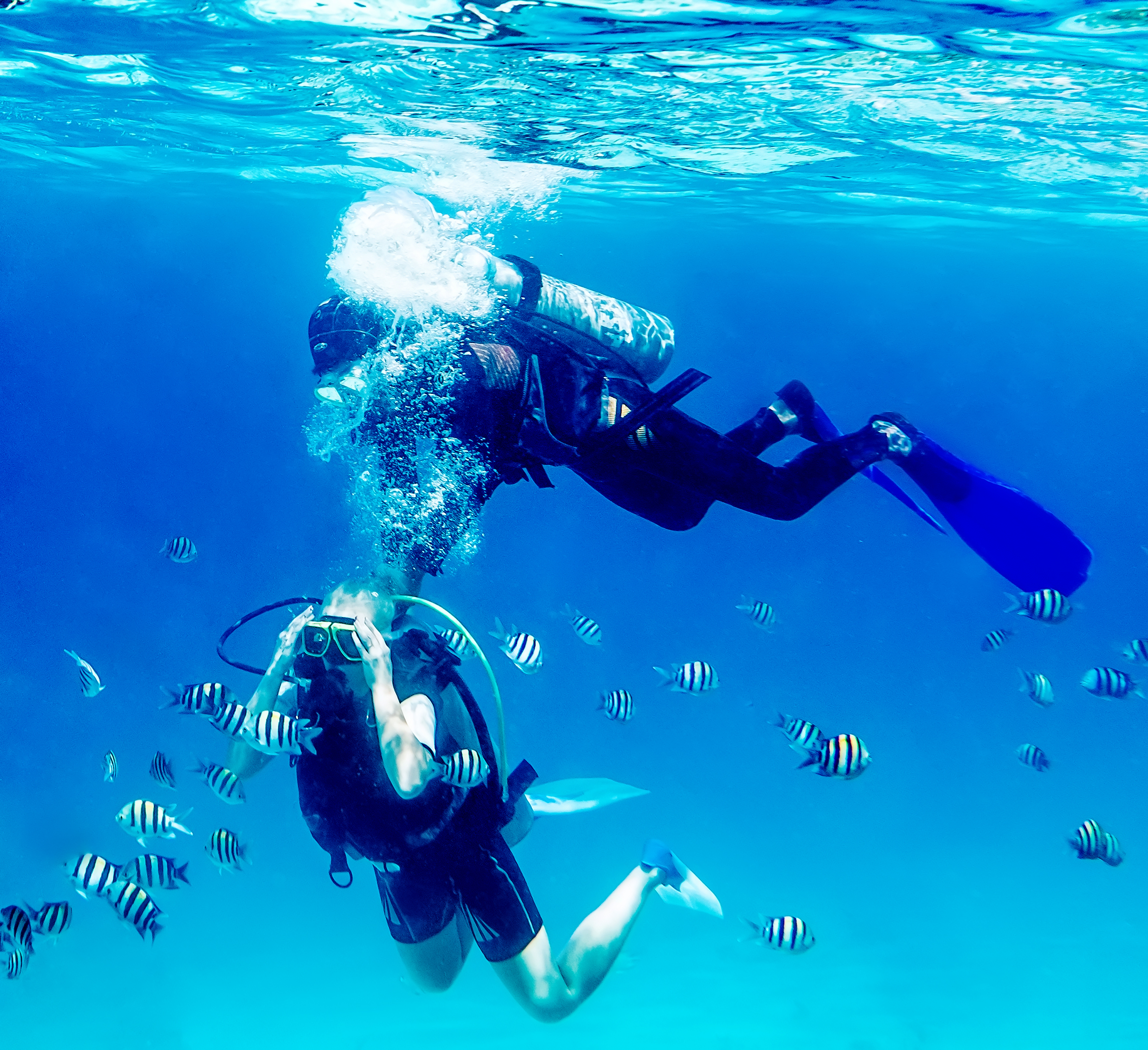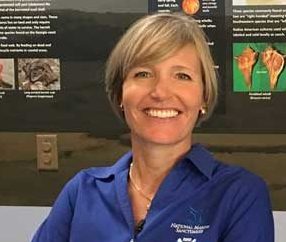During the COVID pandemic, intrepid travellers found themselves with limited choices. But one destination, the Florida Keys, offered easy access to wide open spaces with turquoise waters, tropical marine life, and an abundance of activities without having to leave the country. A busy year-round destination under normal conditions, the southernmost islands of the continental United States experienced record numbers of tourists during the pandemic, with experts predicting that interest in the Keys will continue to grow in the long term. Marine resource managers must plan for these heightened levels of tourism and consider how to build resiliency in partnership with the community and industry.
Florida Keys National Marine Sanctuary is one of 15 marine protected areas that make up the National Marine Sanctuary System. Administered by the National Oceanic and Atmospheric Administration (NOAA), a federal agency, and jointly managed with the state of Florida, Florida Keys National Marine Sanctuary protects 3,800 square miles of waters surrounding the Keys, from south of Miami westwards to the Dry Tortugas (excluding the Dry Tortugas National Park), meaning that once you set foot in Keys waters, you have entered the sanctuary.
Within its boundaries lie spectacular, unique and nationally significant marine resources, including North America’s only coral barrier reef, extensive seagrass beds, mangrove-fringed islands and more than 6,000 species of marine life. The sanctuary also protects pieces of our nation’s history such as shipwrecks and other archaeological treasures.
These spectacular natural and historic resources are bucket-list destinations. Prior to COVID, the island chain drew over 5 million tourists per year (20 percent of whom are international travellers) with 2.4 million participating in recreational fishing and 1.6 million in boating. Another 1.6 million divers and snorkelers visit the protected waters each year, according to Monroe County’s Tourist Development Council.
This tourism draw does not come without challenges; in the months before COVID, the Florida Keys appeared Fodor’s No-Go List. In November 2019, the international travel company recommended that tourists avoid the Florida Keys due to the stress the area’s reefs were experiencing from Stony Coral Tissue Loss Disease. However, COVID struck before any potential impact from this recommendation could be measured. The Keys ultimately experienced an even greater influx of tourists.
To protect the local community from COVID transmission initially, the only road into the Florida Keys was closed to all but local traffic and essential vendors. During those 10 weeks, the islands were dramatically different, and tourism-dependent businesses struggled mightily.
Once the Keys reopened and the state of Florida removed certain COVID-related restrictions, tourists returned in record numbers. Air traffic at the Key West International Airport rose 52 percent, with 2021 welcoming a record 738,000 passengers. Hotel occupancy climbed to near 100 percent. With cruise ships tied up in port and international travel extremely restricted, U.S. travellers had limited options and many chose to visit the Florida Keys. The Monroe County Tourist Development Council’s advertising agency capitalised on the challenges of travelling elsewhere, as well as people’s desire to visit areas with wide open spaces, promising a tropical oasis from which one could escape COVID quarantine.
Apparently, it worked. One way to measure increased demand is through hotel taxes. In 2019, prior to COVID, visitors to Monroe County paid a record US$51.5 million in occupancy tax as part of room rates. In the full year that followed COVID, that figure leaped to $69.7 million, as demand pushed nightly hotel rates to among the highest in the nation.
These trends seem to be continuing: February 2022 occupancy tax collections reached a record high of $10 million. The previous record-high monthly amount was $9 million in March 2021. The highest pre-COVID monthly amount was $7 million in March 2019. For comparison, in April 2020 during the roadblock, collections hit a record low of $477,680, contributed mostly by contractors, vendors and other essential visitors.
Meanwhile, local residents sought relief from the pandemic by taking to the water in growing numbers. A pre- and post-COVID tally of boat registrations saw a nearly 3 percent increase in Monroe County and almost 10 percent in Miami–Dade County. Many Miami-Dade boaters spend their time in the waters of the Upper Keys, and on-water activities noticeably increased.
The question we face in the Florida Keys is what to do if these increased tourism numbers persist. Tour operators have reported that new clients who ‘discovered‘ the Keys during COVID plan to return now that they know what the area has to offer and how easy it is to travel to there. This is our ‘build back better‘ challenge.
Recognising that heads in beds produce increased revenue for the Tourist Development Council, one consideration is to direct a portion of those generated funds towards conservation programmes and projects. Further, tourism advertising should focus on stewardship messages targeting tourists interested in sustainable activities. Likewise, businesses such as hotels, dive shops and tour operators could collect donations or charge a stewardship fee to support conservation efforts.
Florida Keys National Marine Sanctuary and others in the community are working to offer tourists eco-experiences such as clean-up activities while they dive, paddle or walk the beaches. Another way visitors can support conservation in the Keys is by booking their tours with operators participating in the sanctuary’s Blue Star programme. Participants in the Blue Star Diving programme promote dive and snorkel best practices that reduce impacts on maritime heritage resources and marine ecosystems. Charter operators in the Blue Star Fishing programme expand clients’ awareness and knowledge about responsible angling practices, the South Florida ecosystem, and Florida Keys National Marine Sanctuary[1].
Recognising that our reefs are the lifeblood of our tourism economy, many organisations are working to provide opportunities to support coral restoration. NOAA, through the sanctuary and the National Marine Fisheries Service, is undertaking an ambitious coral restoration programme called Mission: Iconic Reefs[2]. This effort includes Iconic Reef Guardians, a stewardship programme that offers visitors and residents the chance to learn about and participate in restoration at seven ecologically important reefs throughout Keys waters.
Because not every visitor uses a tour operator during their visit, the sanctuary also has developed a tool that will essentially place a tour guide in the palm of your hand: the Marine Sanctuary Explorer mobile app is coming soon for both Apple and Android. This tool will help mariners learn (and hopefully follow) the rules to protect the precious resources of the sanctuary. The app features information about sanctuary species, regulations, zones, and recreational activities with a GPS-enabled interactive map. The app can be updated easily by sanctuary staff to reflect zoning changes and new educational content.
New educational exhibits are being installed in the Florida Keys Eco-discovery Center, which serves as the sanctuary’s visitor centre in Key West. The pandemic shutdown presented an opportunity to refresh the interactive displays without long-term disruption to the centre’s operations. When it is open, nearly half a million guests each year are educated about the uniquely important marine ecosystem.
Additionally, the sanctuary is exploring updates to its extensive mooring buoy system, recognising the increasing number of tourists as well as the growing size of many of the vessels using sanctuary waters. Nearly 500 mooring buoys are available for use at no cost to the boater. Updates will help ensure that increased vessel activity does not further damage the reefs. In areas where anchoring is prohibited, once available moorings are filled, additional users must go elsewhere, limiting the amount of use in a given area.
While COVID may have decreased tourism impacts in some marine protected areas around the world, for Florida Keys National Marine Sanctuary, the result was a significant increase in activities and impacts. The increased tourism presents both a challenge and opportunity. The tourist sector and individual tourists can be active partners in maintaining and sustaining the resources they come to see and enjoy.
—–
[1] National Marine Sanctuaries, “Blue Star Operators,” https://sanctuaries.noaa.gov/bluestar/operators.html.
[2] NOAA Fisheries, “Restoring Seven Iconic Reefs: A Mission to Recover the Coral Reefs of the Florida Keys,” https://www.fisheries.noaa.gov/southeast/habitat-conservation/restoring-seven-iconic-reefs-mission-recover-coral-reefs-florida-keys.


 Previous
Previous


